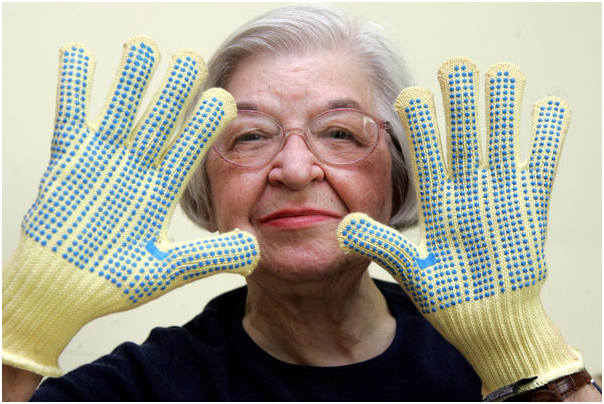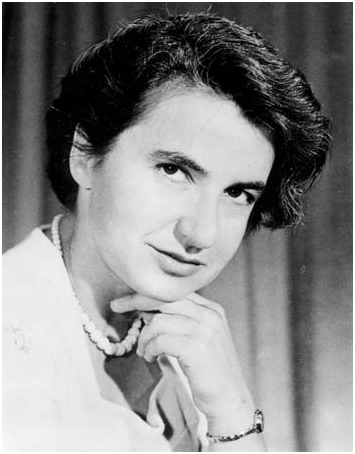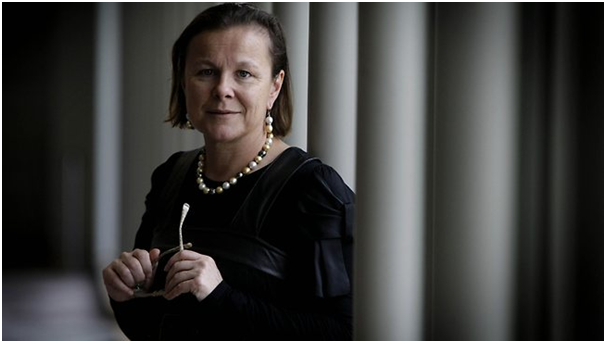Can you cut 1 Tonne of carbon pollution out of your life?
Take the challengeScience forms part of our lives every day from the food we eat, gadgets we use and even down to the money we use to pay for things. But as a scientist, I felt it was important to highlight this week what women have contributed to society over time and how these women also changed the world around them. Some of these women I look up to, especially as many forged a path in science during a time where society was not so accepting of women having careers let alone inventing or becoming famous for their work. They wanted to make a difference and they did.
Rachel Carson

Image: Wikipedia
American biologist and activist who wrote the groundbreaking book "Silent Spring" highlighted the detrimental effects on the environment of the indiscriminate use of pesticides. Carson was met with opposition by large chemical companies however her work led to national policy on pesticides being developed in the US and the eventual ban of the insecticide and carcinogen, DDT. She inspires many in grassroots environmental movements.
Stephanie Kwolek

Image: NY Times
Best friend of motorcyclists and law enforcement everywhere, Stephanie Kwolek invented Kevlar while working as a chemist at DuPont. Its initial application was to replace steel in tyres however it is now used in many items globally including body armour, speakers, instrument bows, ropes and more.
Rosalind Franklin

Image: Wikipedia
It is widely believed that Nobel Prize winners Watson and Crick were the ones who discovered the DNA model. However, Franklin, a pioneering English molecular biologist, had discovered 2 forms of DNA and also concluded that the DNA structure was that of a 3D double helix via the use of X-Ray crystallography.
She carried out this groundbreaking work during a time where sexism towards women in science was rife. It was her data and the famed "Photograph 51" which showed the structure of DNA that Watson and Crick used to create their DNA model. Sadly, Franklin died at 37 from ovarian cancer and never achieved the Nobel Prize she rightly deserved.
Fiona Wood

Image: Science Soup
Awarded Australian of the Year in 2005, Professor Fiona Wood is a highly respected and innovative plastic surgeon whose invention of "Spray On Skin" has changed the way the medical world treats burns patients. With her extensive expertise, she was instrumental in the treatment of 25 people who survived the 2002 Bali Bombings. Professor Wood also heads up the research team at the Fiona Wood Foundation, an organisation dedicated to improve the quality of life of burns patients through research and treatment.
Shirley Jackson

Image: Washington Post
Dr Jackson is the first African-American woman to be awarded a PhD from the eminent Massachusetts Institute of Technology. In her early academic days however Dr Jackson was subjected to discrimination by other students not just for her gender but her skin colour.
She pioneered much of the early research into telecommunications using her knowledge in physics which laid the foundations for many inventions such as faxing, fibre optic cabling and more.
Maria Telkes

Image: Wikipedia
A woman who clearly saw the benefit of renewable solar energy, Telkes was a pioneering Hungarian-American scientist whose work in solar technology assisted her in developing the first solar heating system for a house, 6 years after the invention of the solar cell by Russell Ohl and long before the mainstream use of residential solar panels and solar powered cars. Dr Telkes also invented the Solar Still, a device which uses solar energy to convert saltwater into drinking water which was used by US soldiers during WWII and laid the blueprint for the modern version.
Elizabeth Blackburn

Image: Wikipedia
Profession Blackburn is an Australian molecular biologist who has dedicated her life to understanding the telomere, the end structure which protects a chromosome.
In 2009, she was awarded the Nobel Prize in Medicine with 2 colleagues for her co-discovery of telomerase, an enzyme which replenishes the telomere. This kind of work has importance in the areas of premature ageing, cancer, diabetes and more. Professor Blackburn has won other numerous awards for her work including the Royal Medal of the Royal Society and L'Oreal-UNESCO Women in Science Award.
Sylvia Earle

Image: National Geographic
Known as "Her Deepness", American marine biologist Dr Earle is a tireless activist for our oceans and has worked for decades in ocean exploration. She was the captain of the first team to live underwater and started her own company to build deep sea exploration vehicles. She is an Explorer in Residence with National Geographic and founder of "Mission Blue", an organisation dedicated to encourage public support to protect our oceans. A winner of countless awards including the TED prize for her TED talk "My Wish: Protect our Oceans", Dr Earle is also the subject of a documentary, Mission Blue which features her life, work and campaign to create a global network of protected marine areas.
While still underrepresented in largely a male-dominated field, women are making significant discoveries and impacts in the world of science. It is crucial that young women are inspired to pursue a career in science, so society can benefit from the next generation of visionaries, inventors, environmentalists and more.

